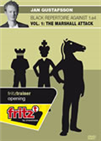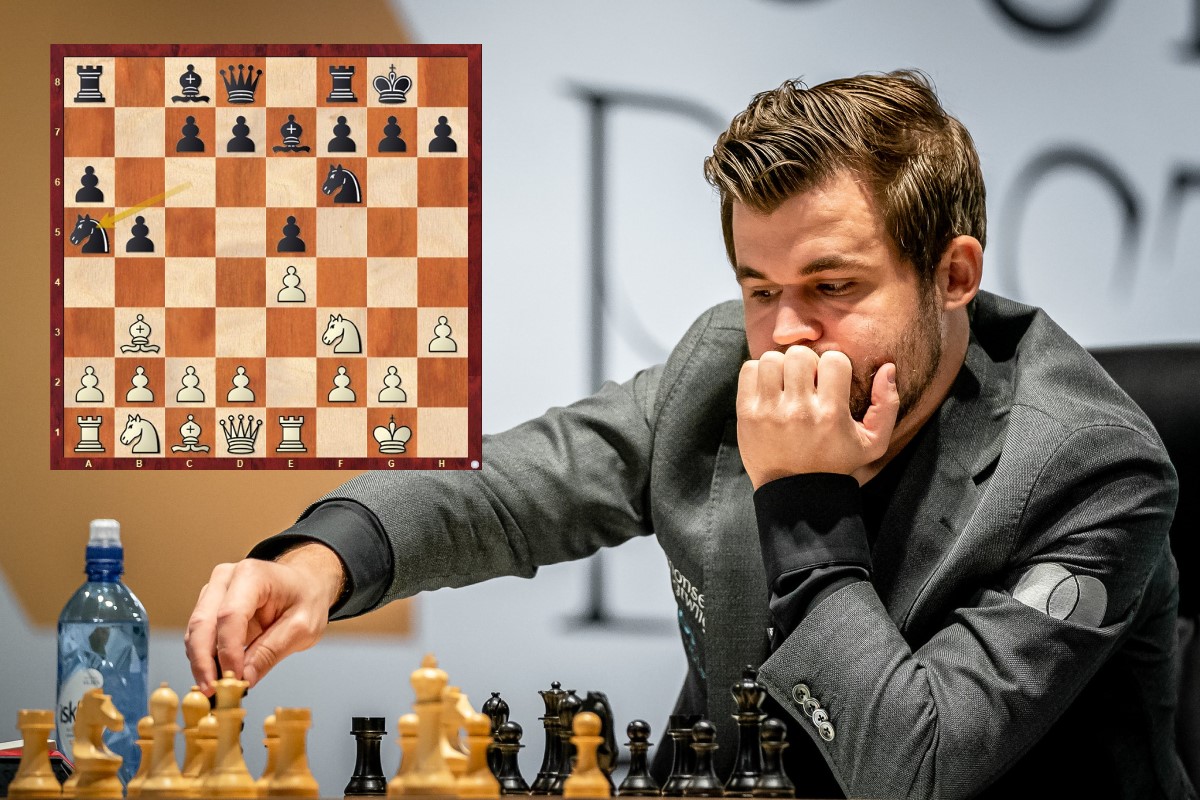Well-armed contenders
By Michael Adams
After a lot of build up, everyone was eager for the match to start, and this fighting game bodes well for the spectators.
An interesting opening encounter. Magnus edged the preparation battle, although clearly both participants are well armed there. Carlsen got the type of position he would probably be happy to see in this match, but Ian got back on track after drifting earlier in the endgame. The Marshall also proved a tough nut to crack for Nepomniachtchi’s compatriot Sergey Karjakin in their match. With no free day before game 3, it will be intriguing to see if Magnus repeats his opening choice then.
1.e4 e5 2.Nf3 Nc6 3.Bb5 a6 4.Ba4 Nf6 5.0-0 Be7 6.Re1 b5 7.Bb3 0-0 8.h3 Na5
I was happy to see an opening I have some experience with, but I was completely unaware of this pretty rare move. Like a lot of valuable new concepts, in retrospect, it doesn’t seem that surprising.
 The Marshall Attack is one of the most dynamic replies Black has at his disposal against 1.e4. At the cost of a pawn, Black takes over the initiative from the get - go and goes after the white king. Wrongly considered to be mainly a drawing weapon by some, this DVD offers many new ideas for Black, showing how to keep the queens on the board and to play for a win in almost all cases.
The Marshall Attack is one of the most dynamic replies Black has at his disposal against 1.e4. At the cost of a pawn, Black takes over the initiative from the get - go and goes after the white king. Wrongly considered to be mainly a drawing weapon by some, this DVD offers many new ideas for Black, showing how to keep the queens on the board and to play for a win in almost all cases.
[Another major line that was debated in the Karjakin-Carlsen WC Match continues 8...Bb7 9.d3 d5 10.exd5 Nxd5 11.Nxe5 Nd4 when Black will acquire the bishop pair and a lead in development to compensate for the pawn. In the game, events develop in similar fashion.]
9.Nxe5 Nxb3
[9...d6? 10.Nf3 c5 11.d3 doesn’t give enough.]
10.axb3 Bb7 11.d3 d5
The forcing play continues.
12.exd5 Qxd5
[It’s tempting to try 12...Nxd5 but 13.d4! is a good response. The knight might drop back to d3 whilst his colleague goes to f3 to consolidate matters.]
13.Qf3
[13.Nf3 Rae8 gives Black plenty of compensation. Swapping queens is clearly preferable.]
13...Bd6 14.Kf1
[A subtle finesse. Not 14.Nc3? Qxe5 15.Rxe5 Bxf3-+;
14.Qxd5 Nxd5 15.Bd2 gives Black a better version of the game.]
14...Rfb8 The players were rather substantially better informed than me, as Nepo confirmed at the press conference that this position was also in his preparation, whilst Carlsen was still playing quickly.
[14...Rfe8? 15.Nc3! Qxe5 16.Rxe5 Bxf3 17.Rxe8+± is exactly what White wants.]
Replay the analysis in full on our interactive replayer below.
Let our authors show you how Carlsen tailored his openings to be able to outplay his opponents strategically in the middlegame or to obtain an enduring advantage into the endgame.
Links























